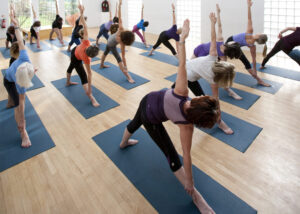The modern-day yoga practice that you are most familiar with may take place in a class with one instructor to guide you and correct your poses. Ashtanga yoga is quite different: it focuses on the entirety of the yoga experience rather than just the exercise aspect. As you practice this form of yoga, you will learn about the eight limbs of Ashtanga yoga and what they mean.
The History of Ashtanga Yoga
The definition of Ashtanga yoga is yoga based on the eight limbs, which takes place at your own pace with the help of an instructor to guide you. Let’s see what the eight limbs entail:
Yama – your attitude towards the environment and your responsibility in taking responsible care of the Earth.
Niyama – our attitude towards ourselves in life and all the things that we shouldn’t do that are poor for our well-being.
Asana – your physical posture and the correctness of your poses.
Pranayama – the expansion of the breath to calm your soul and supply your body with the most oxygen possible to control your life energy.
Pratyahara – withdrawing your senses and immersing yourself in the experience.
Dharana – your concentration and focus during meditation.
Dhyana – meditation.
And, finally, Samadhi – complete integration of the limbs.
Krishnamacharya is the grandfather of modern-day yoga. As early as 1888, he said that yoga should adapt to the individual and not the other way around. His focus was also on the eight limbs and giving each individual their own set of poses that would work best for them according to the eight limbs. One primary difference between Ashtanga and other varieties of yoga is individual classes compared to group classes.
What is the difference between Vinyasa and Ashtanga Yoga?
These two types of yoga are easy to mentally combine or confuse, as both focus on learning asanas, or poses, and repeating them.
Ashtanga yoga for beginners focuses on the individual’s level of growth and learning speed. You will engage in a specific set of asanas and learn them by heart, then continue to do them in the same order. Vinyasa yoga focuses on poses, too, but the order changes, and it is more fast-paced. You will link your breath to your rhythm, as in an exercise routine, and your series of poses develop a flow in the process.
You may wonder how to incorporate the eight limbs into Ashtanga. Initially, you won’t include all the aspects in your routine. You will first have to master the routine so that you can reach a meditative state. In this state, you can enter the zone and feel the flow of the movements as a natural process, all guided by your breathing. The practice is both dynamic and challenging, and you will build strength by improving your body’s abilities.
Your first set of poses, the Primary Series, can take up to 90 minutes to complete. A teacher will structure and set your poses for you, and you will repeat them until you have mastered them or the yogi decides that you are ready to move on. Your teacher will also adjust your poses to help you throughout your journey. An Ashtanga yoga book may be helpful to the process of remembering your poses at home.
Most individuals practice this type of yoga in private sessions, although group sessions also take place in a more relaxed environment and at a slower pace so that all the students can engage on the same level.
The first Primary Series includes five sun salutations A and three to five sun salutations B. You will also complete sets of standing and seated postures. Ashtanga is also known for keeping your heart rate up through a series of jumps. You will build strength through the finishing sequence, which includes headstands, backbends, and shoulder stands.
Ashtanga yoga chants
Think you are up for the Ashtanga challenge? It is the perfect yoga for you if you want an effective workout with a mindful, holistic approach towards your well-being and your responsibility towards the Earth paired with breathing, meditation, and being in the moment completely.
You will find the meaning further emphasized in the Ashtanga yoga closing chant:
May all be well with mankind.
May the leaders of the Earth protect it and all beings by keeping the right path.
May there be goodness for those who know the Earth to be sacred.
May all the world be happy.
Om peace, peace, peace.







